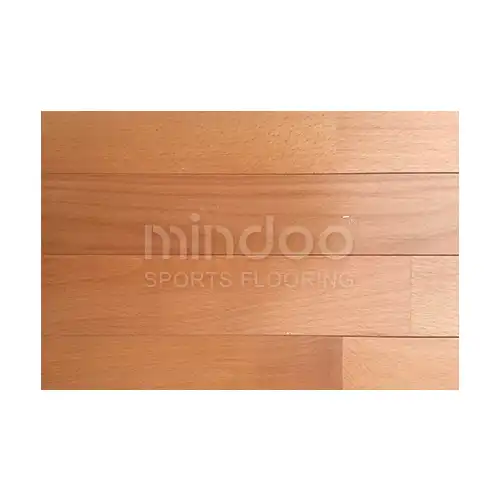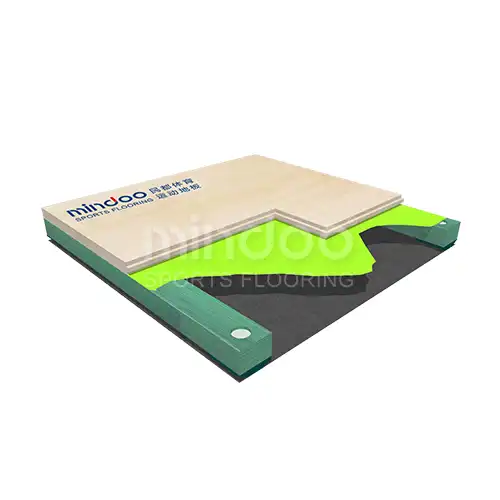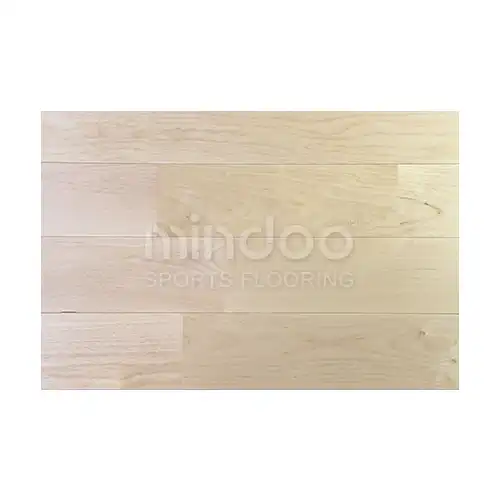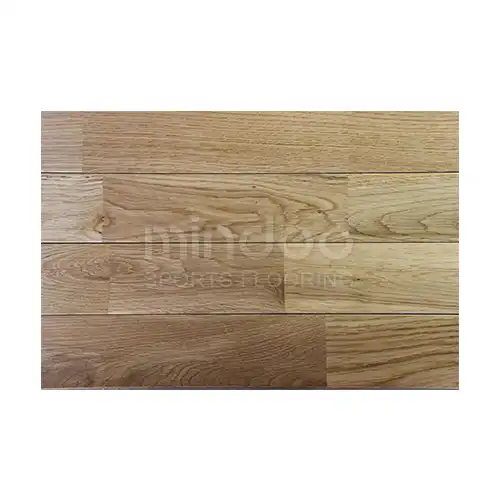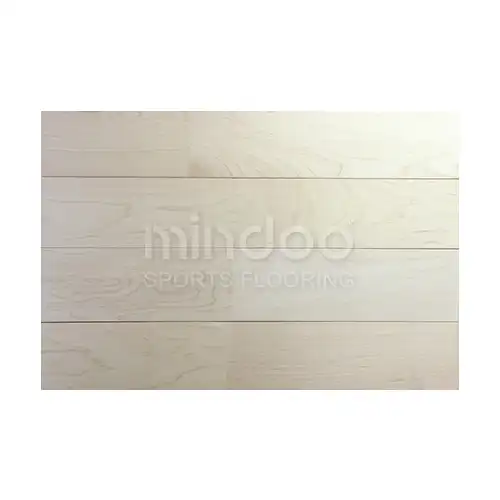Enhancing the Functionality and Aesthetic of Sports Wood Flooring Through Design
Sports wood flooring is a key component of sports facilities, influencing both the functionality of the venue and the performance and experience of athletes. As sports technology and design concepts continue to evolve, how to enhance the functionality and aesthetics of sports wood flooring has become a focal point in the industry. This article explores several practical design ideas to help elevate the overall value of sports wood flooring.
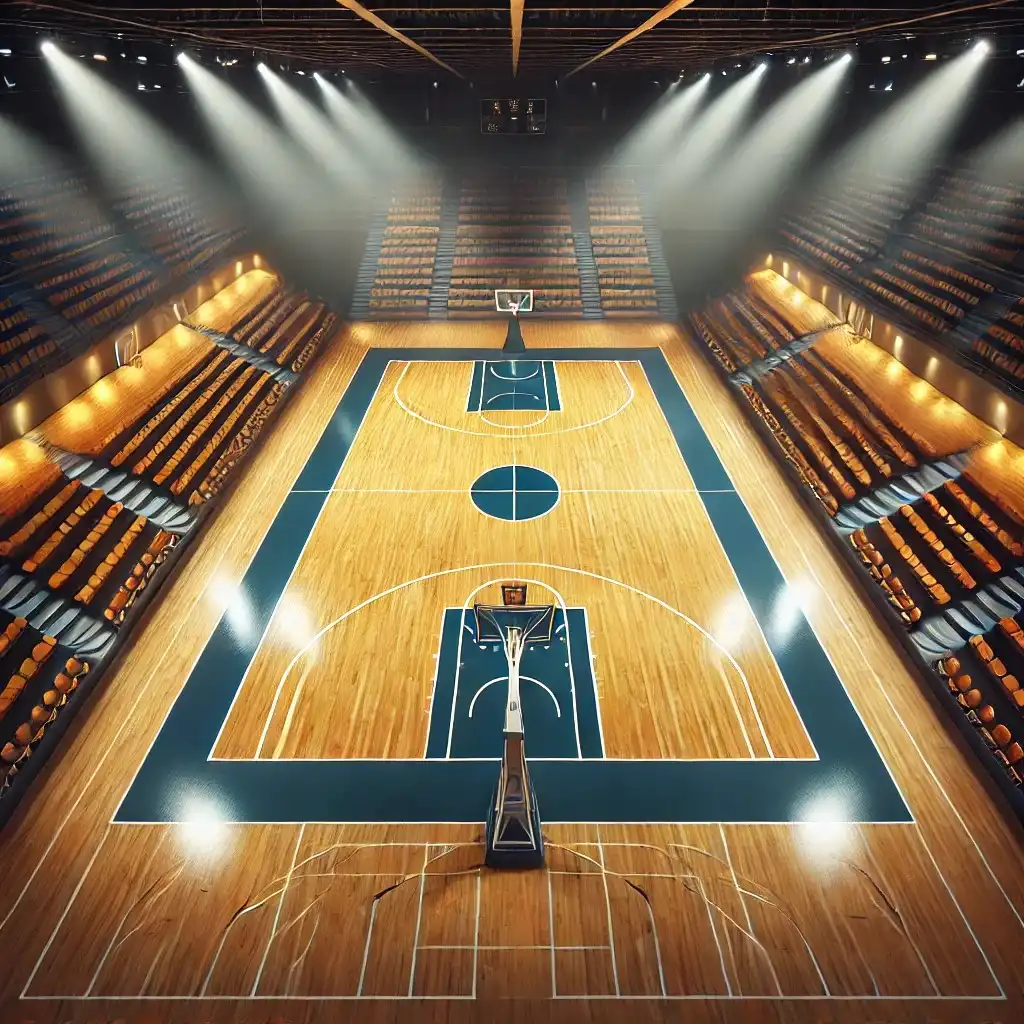
1. Optimizing Flooring Elasticity and Comfort
One of the fundamental functions of sports wood flooring is to provide sufficient elasticity to protect athletes' joints and bones. Traditional wood flooring relies on the natural characteristics of the wood itself for elasticity and stability, but with advancements in technology, modern designs go beyond material selection to include structural designs and surface treatments.
Design Concept:
- Multi-Layer Composite Structure: Using a multi-layer wood composite structure can effectively increase the floor's elasticity. The top layer uses hardwood for durability, while the lower layers use softer wood or synthetic materials to enhance flexibility.
- Shock-Absorbing Layer: Adding an elastic shock-absorbing layer at the bottom of the floor using materials like rubber or high-polymer substances can further reduce impact, especially in high-impact sports such as basketball and volleyball, reducing strain on athletes' knees and ankles.
- Feasibility: This design can be fully implemented using existing wood composite technologies and shock-absorbing materials. Many high-end sports venues already use a similar design, such as composite wood and elastic shock-absorbing layers combined in flooring.
2. Enhancing Slip Resistance and Safety
The slip resistance of sports wood flooring directly affects athlete safety, especially during intense competition. Preventing accidents caused by slipping is a crucial part of flooring design.
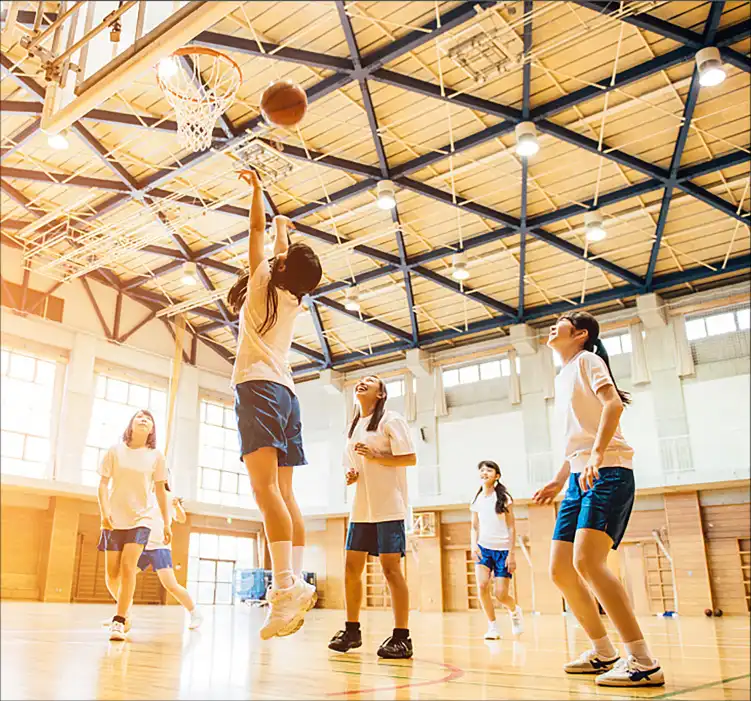
Design Concept:
- Surface Treatment Techniques: Specialized anti-slip coatings and surface treatments, such as micro-sanding or laser etching, can increase friction on the wood floor, ensuring that athletes are not at risk of slipping during fast movements.
- Antibacterial and Moisture-Resistant Technology: Integrating antibacterial additives into the surface coating can improve hygiene, while moisture-resistant treatments prevent wood from rotting due to humidity, which is especially important in venues near swimming pools or other humid environments.
- Feasibility: Anti-slip coating technology is widely available in the market, and combining slip resistance with antibacterial functions is very feasible in real-world applications. Many sports wood flooring manufacturers have been innovating in coating technology to improve safety and durability.
3. Sustainable and Eco-Friendly Design
With growing environmental awareness, the materials and design of sports wood flooring must align with sustainable development principles. This not only reduces environmental impact but also enhances the venue's social responsibility.
Design Concept:
- Use of Sustainable Wood: Selecting wood from certified sustainable forests, such as FSC (Forest Stewardship Council) certified timber, helps avoid deforestation and protects ecosystems.
- Eco-Friendly Coatings and Materials: Water-based eco-friendly coatings and low-VOC (volatile organic compound) materials can be used to minimize indoor air quality impacts, promoting the health of athletes.
- Feasibility: The use of sustainable wood and water-based coatings has already become a standard in the market. Many high-end sports wood flooring manufacturers are adopting these principles and adhering to various environmental certification standards.
4. Aesthetic Design and Integration with Venue Atmosphere
Beyond functionality, the aesthetic design of sports wood flooring plays an important role in enhancing the overall sensory experience of the venue. Through the thoughtful combination of color, texture, and form, the flooring can blend seamlessly with the venue's overall design style and cultural atmosphere.
Design Concept:
- Color and Texture Design: The combination of colors and textures in the flooring is not just decorative; it also affects the venue’s atmosphere. For example, warm-toned wood can create a cozy feel, while cool tones give the space a more modern look. Texture designs can be customized based on the cultural characteristics of the venue.
- Local Design and Markings: Specific areas of the wood floor can feature different wood types or colors to define different sport zones. For example, the three-point line and free throw area in a basketball court can be marked with different wood tones, enhancing both aesthetics and functionality by helping athletes quickly identify court boundaries.
- Feasibility: With advances in digital printing technology, custom textures and colors have become increasingly feasible. Many sports wood flooring suppliers already offer bespoke design services, allowing for the creation of personalized floor styles based on client needs.
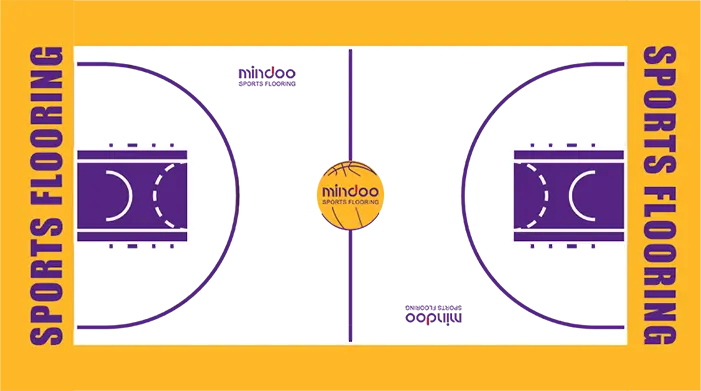
5. Integration of Smart Functions
As the Internet of Things (IoT) technology continues to advance, smart features are gradually being integrated into sports facilities, and sports wood flooring is no exception. By incorporating smart sensing technology, sports wood flooring can collect data and monitor environmental conditions, providing real-time feedback for athletes and coaches.
Design Concept:
- Embedded Sensors: Sensors embedded within the floor can monitor athletes' movements, such as running speed and jump counts, providing valuable data for coaches.
- Smart Environmental Control: The flooring can sense temperature and humidity changes and adjust the venue’s environment in real-time to ensure the optimal condition for the wood floor.
- Feasibility: Smart sensor technology has already been widely adopted in sports venues, and integrating embedded sensors and environmental control systems into wood flooring is a natural progression in current design trends.
Through innovative design concepts, the functionality and aesthetics of sports wood flooring can be significantly enhanced. Whether it’s optimizing elasticity, improving slip resistance, focusing on sustainability, or integrating smart technology, the future of sports wood flooring holds immense potential. These design ideas are not only grounded in safety and durability but also aim to provide a more comfortable, eco-friendly, and visually pleasing environment for athletes and spectators. With continuous technological advancements, these design concepts are highly feasible and will continue to evolve, making sports wood flooring smarter, more sustainable, and more multifunctional in the future.
